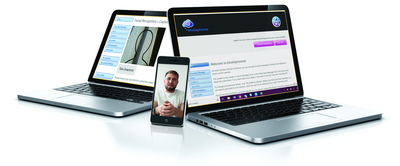Guest blog: From Digital Urgencies to Digital Transformation: the need for post-pandemic evaluation of technology use in prisons

After 2 years of COVID restrictions and challenges, individuals and organisations are gradually moving back to normal. However, as for billions of people, surviving and living a meaningful life during Covid times have meant using technologies for studying, working, accessing information and services, staying in touch with family and friends and expanding digital solutions to many other parts of daily life for quite a long period. It is unlikely this back to normal will be the same as the normal it used to be before the pandemic. We are shifting to a new normal, a new post-Covid reality in a transformed society, including a transformed prison and probation environment.
During the Covid crisis, for many offenders, technology has made the difference between the assurance of some basic social and professional communication and the risk of complete isolation in the already communication-poor environments they are living in.
Technology also has helped justice professionals to continue to do their work in this disturbed environment although this didn’t always happen without hurdles. There was no time to lose, solutions were needed, on the spot. What usually takes months of budgeting, thinking, designing, tendering and negotiation, was now implemented in weeks or months. Because there was no option, and because our rapidly evolving world full of innovation made it possible. Many technologies have been installed very quickly, most of them have been chosen without careful analysis or reflection. But they were emergency solutions, and they helped prison and probation services to cope with the situation. Processes were changed on the fly without prior impact analysis, creation of a supportive regulatory framework or thorough risk assessment.
The often temporary nature of those COVID urgency IT projects have left prison and probation services today with a lot of homework, a lot of evaluations: what is there to stay and what is not, what lessons have we learned, what worked or didn’t? This is not an easy job as it is much broader than just evaluating some technologies. Thorough evaluation will touch on some fundamental aspects of offender management, the treatment of offenders, the role of staff and the value of both physical and virtual communication and service delivery.

We see two major pitfalls that need to be avoided during this evaluation. First of all, the forced replacing of physical processes by virtual ones did make us realise more than ever how important face to face communication and real physical presence is. However, this finding should not lead to valorise the one above the other: they are just different. We need to adopt the best of both worlds in the new normal which will be a hybrid one where technology is used in a balanced way to facilitate more and easier communication and to assist and extend the human capabilities without trying to replace them.
This is the reality for communication and also for information management systems: a mature and integrated offender management system assures collaboration by secure sharing of information and supporting administrative and operational processes.
It should do this by delivering tailored functionality to support secure operations without blocking the creativeness of knowledge workers when needed. Enabling easy, intuitive and tailored functionality and flexibility to support the wide range of stakeholders involved in offender and prison management is something that needs specific design and knowledge from specialists.
The second potential pitfall during this evaluation is more related to the technology as such. It is impossible to evaluate technology without analysing in depth the quality of the solution, how it has been implemented and how it is being used. In some jurisdictions, the administrative, managerial and security burden related to the use of standard videoconferencing solutions to enable videocalls in a prison setting has given many headaches and even potential reasons to reduce or stop organising videocalls at all.
However, other jurisdictions such as Scotland, England and Wales have been very successful in achieving similar goals by using solutions that have been designed for prisons and take care of those problems in a most efficient and user-friendly way.
This shows that the use of different solutions can put the evaluation of using technology in a completely different perspective and acknowledge that in many ways standard technologies are just often not fit to be used in the very unique and specific prison context.
The pandemic has undoubtedly accelerated and boosted the use of technologies in the prison setting across the globe and started a digital transformation in the sector. Real and sustainable success stories are there to find where people are carefully reflecting and finding balances between security, efficiency and rehabilitation, between human and machines and where professionals choose technologies that are designed to facilitate this equilibrium.


